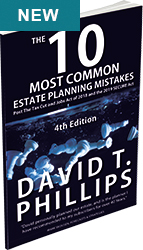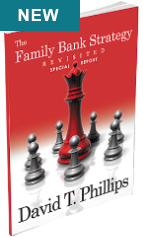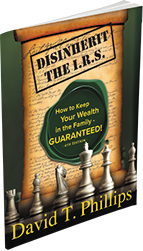
Whole Life Insurance
By Todd Phillips
Whole life is the most standard type of permanent insurance. As it is rightly called, “whole life” provides permanent protection for your entire life; from the date you purchase it until you die. The premium payments in whole life are fixed, meaning they will not change over the life of the policy. It has a guaranteed cash value and death benefit, and includes a minimum guaranteed interest rate to hold the entire product together.
Price
Generally speaking, whole life is the most expensive form of life insurance because you have to pay for the right to have guaranteed premiums and death benefit for life. While some forms of Universal Life also provide guaranteed death benefits and premiums, Whole life can also guarantee cash value accumulation based in the form of dividends.
Out Of Vogue
Because of higher cost for whole life, less flexibility, and low interest rates on the cash accumulation, whole life policies have fallen out of vogue since the 1980’s. In fact, they’ve become so unpopular that many agents and insurance brokerage firms no longer carry whole life in their boutique of products. If you currently have a whole life insurance policy, you might want to evaluate your plan to a newer Universal Life plan that may be more cost effective.
I should add that there are some newer forms of hybrid Whole Life and Index Universal Life which include built in Chronic Illness Riders that we think are very attractive. A few insurers have created single premium (one-time payment) plans with significant guarantees and 100% liquidity available on your premium. These new Single Premium Whole Life plans have provisions that will pay out your life insurance benefits to you while you living if you become chronically ill and cannot perform 2 of the 6 ADLs. In addition, unlike most Whole Life plans, these new hybrid plans come with several investment strategies – typically linked to a stock Index -- giving you choice on how your interest is credited on your cash values in the account. (See ABC Plans O.W.P.)
Who Should Buy Whole Life?
You should buy whole life insurance if you want lifetime insurance with guaranteed premiums and death benefit and do not want to worry about interest rate or market fluctuations.
Non-Par vs Par Whole Life
Companies known as mutual companies have no owners other than the policy owners. Mutual companies pay dividends to their policy owners. A policy that receives dividends is said to be “participating”. These dividends are considered the return of excess premium. Most policy reserves are based on conservative interest rate, usually 3.5% per year. Since the companies can generally earn more, they return a portion of the excess in the form of dividends. The cumulative dividends are treated as an income tax-free return until they exceed the cumulative premiums paid.
Non-Participating Whole life is slightly different than participating whole life because they do not pay dividends on the excess cash. Instead, they are usually “interest sensitive” and the excess goes into the cash accumulation. You can expect the price for non-participating whole life to range midway between universal life and participating whole life.
How They Calculate The Premium
In most cases, insurance actuaries determine that the premium and reserve requirements are based on an assumed life expectancy of age 100. Since it is presumed that people die at age 100, the actuaries calculate the premiums, taking into consideration the guaranteed minimum interest rate in order to make the reserves equal the death benefit at age 100. Those reaching age 100 are paid the face amount of the policy because they survived the maximum period set by the actuaries. For this reason a whole life policy may be viewed as an endowment maturing at age 100.




